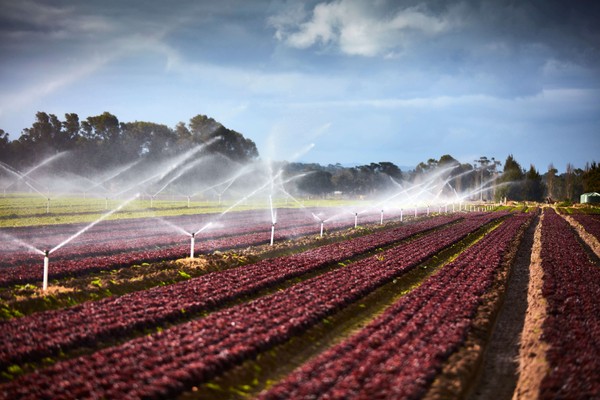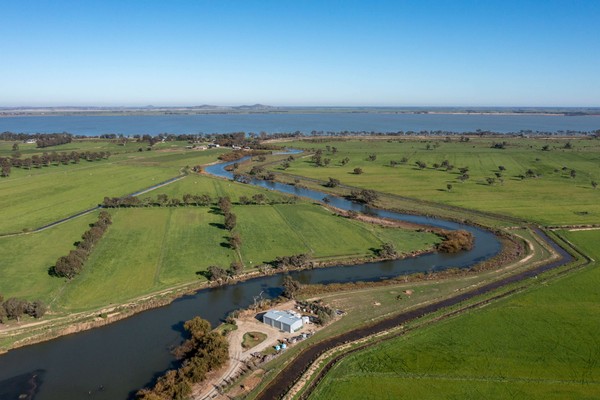On this page:
Overview
The Victorian Water Accounts (VWA) Abbreviations and Glossary provides definitions of acronyms and common terms used in the VWA's information products and services.
Abbreviations
| Abbreviation | Description |
|---|---|
| AWRC | Australian Water Resources Council |
| ML | Megalitre |
| PCV | Permissible Consumptive Volume |
| PWSR | Permanent Water Saving Rules |
| REALM | Resource Allocation Model |
| RWC | Rural Water Corporation |
| VEWH | Victorian Environmental Water Holder |
| VWA | Victorian Water Accounts |
| WSPA | Water Supply Protection Area |
| EPA | Environment Protection Authority |
| GIS | Geographic Information System |
| CEWH | Commonwealth Environmental Water Holder |
| km | Kilometre |
| L | Litre |
| CMA | Catchment Management Authority |
| DEECA | Department of Energy, Environment and Climate Action (Victorian Government, formerly DELWP) |
| DELWP | Department of Environment, Land, Water and Planning (Victorian Government) |
| ESC | Essential Services Commission |
| GL | Gigalitre |
| GMA | Groundwater Management Area |
| GMU | Groundwater Management Unit |
| MDBA | Murray-Darling Basin Authority |
Glossary
Allocation: The assignment of water within a given water year against a water entitlement held by a person or authority. Also see seasonal allocation.
ARWC: A former non-statutory body set up by the Commonwealth and State Governments. It is an abbreviation of Australian Water Resource Council.
Aquifer: A layer of underground sediments that holds groundwater and allows water to flow through it.
Aquitard: An underground layer of clay, silt or rock with low permeability which restricts the movement of groundwater between aquifers.
Basin: The area of land into which a river and its tributaries drain. In the Victorian Water Accounts (VWA), river basins are consistent with those defined by the Australian Water Resource Council (AWRC). The exception is the Murray basin which, for the purposes of this report, includes the Upper Murray basin as defined by the AWRC and areas in Victoria supplied from the Murray River downstream of Lake Hume. Also see river basin.
Beneficial allocation: Treated wastewater discharged to a waterway for recognised environmental purposes (as prescribed by the Environment Protection Authority [EPA]). This must involve a quality characteristic that is a net benefit to the environment.
Bulk entitlement: The right to water held by water corporations and other authorities defined in the Water Act 1989. A bulk entitlement defines the amount of water from a river or storage to which an authority is entitled, and may include the rate at which it may be taken and the supply reliability of the entitlement.
Bulk entitlement conversion order: The statutory instrument used to issue a bulk entitlement under the provisions in the Water Act 1989.
Consumptive entitlement: A water entitlement that permits the holder to use the water taken under the entitlement for the purposes of consumption.
Cap: A limit placed on the amount of water that can be taken from a system within a given timeframe.
Carryover: Provides the right to take unused allocations at the end of one season into the subsequent season. In most of the regulated water systems of northern Victoria and in Werribee in the south, carryover is available, subject to rules, to the holders of permanent entitlements, including water shares, supplies by agreement and specified bulk and environmental entitlements.
Catchment: An area of land where run-off from rainfall goes into one river system.
CMAs: Statutory bodies established under the Catchment and Land Protection Act 1994. CMAs have responsibilities under both the Catchment and Land Protection Act 1994 and the Water Act 1989 for river health; regional and catchment planning and coordination; and waterway, floodplain, salinity and water quality management. It is an abbreviation of catchment management authorities.
Dead storage: The portion of total storage capacity that is equal to the volume of water below the level of the lowest outlet of a storage. This water cannot be accessed under normal operating conditions.
Declared systems: A water system that has been declared in accordance with section 6A of the Water Act 1989. Water rights and take and use licences in declared water systems have been converted into unbundled entitlements.
Delivery bulk entitlement: An entitlement to be supplied with water from another water corporation’s dam within a water supply system that is regulated by the works of another water corporation.
Entitlement: See water entitlement.
Environment: Surroundings in which an organisation operates, including air, water, land, natural resources, flora, fauna, humans and their interdependence.
Environmental (bulk) entitlement: A water entitlement held by the Minister for Water that permits the use of water in a river or storage for a purpose that benefits the environment.
Environmental flow: The streamflow required to maintain appropriate environmental conditions in a waterway.
Evaporation: The process by which water changes from a liquid to a gas or vapour.
Evapotranspiration: The sum of transpiration by plants, evaporation from soil and open water surfaces, and evaporation from the wet surfaces of plants soon after rainfall.
Floodplain: Land adjacent to rivers that is subject to overflow during flood events. Floodplains are often valuable for their ecological assets.
Full return to waterway (licence): A category of licence where all water that is used or diverted is subsequently returned to the river.
Gazette: Refers to the Victorian Government Gazette. An official notification of decisions or actions taken by, or information from, the Governor of Victoria, Government Authorities, Government Departments, Local Councils, companies and individuals.
GIS: A technology used to gather, store, analyse and display geographic information. It is an abbreviation of geographic information system.
GL: 1,000 ML, which is also 1,000,000,000 L. It is an abbreviation of gigalitre.
GMU: Groundwater in Victoria is managed through GMUs. A GMU may be classified as either a groundwater management area (GMA) or a water supply protection area (WSPA). It is an abbreviation of groundwater management unit.
GMA: A discrete area where groundwater resources of a suitable quality for irrigation, commercial or domestic and stock use are available or expected to be available. The area may have a management plan approved by the relevant rural water corporation. It is an abbreviation of groundwater management area.
Groundwater: The reserve of water that is located beneath the earth’s surface in the pores and crevices of rocks and soil. These areas vary in size and volume throughout Victoria and are known as aquifers.
Heritage river: A river protected in Victoria for its special features under the Heritage Rivers Act 1992.
Irrigation district: An area declared under the Water Act 1989 that is supplied with water by channels and pipelines, and that is used mainly for irrigation purposes.
Long-term average annual rainfall (expressed as a percentage): The amount of rainfall across the geographical spread of an area, which is averaged over a grid of about 25 km by 25 km.
Living Murray: A program to improve the health of the Murray River, established by the Murray-Darling Basin Ministerial Council in 2002 and funded by the New South Wales, Victorian, South Australian, Australian Capital Territory and Australian governments.
Millennium Drought: The most severe drought in Victoria's recorded history, spanning from 1997 to 2009.
ML: 1,000,000 litres. It is an abbreviation of megalitre.
Murray-Darling basin cap: The climatically adjusted limit on surface water diversions in the Murray-Darling basin, agreed by a ministerial council under the Murray-Darling Basin Agreement.
Non-potable water: Water not suitable for drinking
Order (ordering of water): The advance notification given by an entitlement holder to a storage operator to enable the storage operator to regulate water flows so that all entitlement holders’ needs can be met at a particular time.
Outside management areas: Areas of Victoria that have not been designated as either a groundwater management area (GMA) or a water supply protection area (WSPA) and contain substantial and often unquantified groundwater of varying yield and quality. Formerly known as unincorporated areas.
Passing flow requirements: The flows that a water authority must pass at its weirs or reservoirs before it can take water for other uses. Passing flow requirements are specified as obligations in bulk entitlements, and entitlement holders must report on their compliance with these requirements.
PCV: The total volume of water licences that may be issued and taken from an area or water system during time period under a Ministerial declaration. It is an abbreviation of permissible consumptive volume.
Percent full: The volume of water in storage as a percentage of the accessible storage capacity. This percentage full may exceed 100% (for example, due to floods).
Qualification of rights: The Minister for Water has the power (under section 33AAA of the Water Act 1989) to qualify rights to water to maintain essential supplies to towns and rural communities. The Minister may declare a temporary qualification of rights where a water shortage exists in an area or water system. Where the water shortage is due to a long-term change to water availability, a permanent qualification of rights may be declared, but only following a long-term water resources assessment that finds the long-term water availability will have a disproportionate effect on water allocated for consumptive purposes or the environment.
Ramsar Convention: An international treaty that aims to conserve wetlands that have been listed for their international significance, to ensure they are managed wisely. It was signed in Ramsar, Iran, in 1971.
Rainfall deciles: A simplified statistical representation of the rainfall experienced in a year relative to prior years.
REALM model: A computer-based water supply system model used by DEECA to aid in the allocation of Victorias water resources. It is an abbreviation of REsource ALlocation Model.
Recycled water: Wastewater (derived from sewerage systems or industry processes) that is treated to a standard appropriate for its intended end use.
Regulated river: A river containing structures (such as dams or major diversion weirs) that control the flow of water in the river for licensed diverters or users in an irrigation district.
Reticulation system: The network of pipelines used to deliver water to end users.
Riparian: Situated alongside a river or stream.
River: A large stream of water flowing to the sea, a lake, a marsh or another river.
River basin: The land into which a river and its tributaries drain. Also see basin.
Seasonal allocation: An entitlement holder’s share of the water available for a season, determined by a water corporation and expressed as a percentage of the entitlement holder’s water share. It is sometimes shortened to allocation.
Sewage: The waterborne wastes of a community.
Small catchment dam: A dam that is filled from its own catchment and is not located on a waterway. This includes small catchment dams used for domestic and stock purposes that are not required to be licensed. It also includes dams used for commercial purposes and irrigation that are now required to be registered (under the Water Act 1989). Not all small catchment dams are currently registered.
Snowy Water Inquiry: The Snowy Water Inquiry was established under the Snowy Hydro Corporatisation Act 1997 (NSW). This inquiry identified and analysed options to mitigate the impact of the Snowy Scheme on environmental flows.
Source bulk entitlement: An entitlement to harvest water directly from a water source.
South Australia-Victoria Designated Area: The area extending 20 km either side of the border between South Australia and Victoria, as set out under the Groundwater (Border Agreement) Act 1985, established for the cooperative management and equitable sharing of groundwater resources between the states.
Spill: An uncontrolled flow of water past a reservoir or a weir.
Stream: A body of water flowing in a bed, river or brook.
Streamflow management plan: A statutory management plan prepared for a WSPA and used to manage the surface water resources of the area.
Take and use licence: A fixed-term entitlement to take and use water from a waterway, catchment dam, spring, soak or aquifer. Each licence is subject to conditions set by the Minister for Water and specified on the licence.
Terminal lakes: Lakes that form the end point of all surface water flow within a basin.
Transpiration: The process by which water that is absorbed by plants; usually through the roots, evaporates from the plants surface into the atmosphere.
Unregulated river: A river without dams or major diversion weirs that control the flow of water in the river.
Use (water use): The water use data presented in this edition of the Victorian Water Accounts is reported as the volume of water diverted from a stream or groundwater bore. It is not the same as use by the end consumer of the water.
VWR: Provides water users with essential information about water entitlements, seasonal allocations, trade and transfers. The VWR is the authoritative record of water entitlements, and it facilitates the transactions that underpin Victoria’s water markets. It is an abbreviation of Victorian Water Register.
Wastewater: The volume of sewage that enters a dedicated treatment plant.
Water balance: A statement of the water flows within a period in an area, in which the sum of the outflows from the area equals the sum of the inflows less the water accumulated in the area.
Water corporations: Government organisations charged with supplying water to urban and rural water users. They administer the diversion of water from waterways and the extraction of groundwater. They were formerly known as water authorities.
Water entitlement: The volume of water authorised to be taken and used by the holder. Water entitlements include bulk entitlements, environmental entitlements, water rights, and surface water and groundwater licences.
Water leaving the basin: The volume of water that is calculated to flow out of the basin. This amount is typically derived from both gauged streamflow information and calculated information.
Water right: A water entitlement held by an irrigator in an irrigation district.
Water share: A legally recognised, secure share of the water available to be taken from a declared water system. Water shares were created as part of the unbundling reforms. They may be high-reliability or low-reliability, and they are specified as a maximum volume of seasonal allocation that may be made against that share.
Water supply system: The infrastructure constructed, maintained and owned by a water corporation that is used to distribute water from its source to a user.
Waterway: The Water Act 1989 defines a waterway as a river, creek, stream, watercourse or a natural channel where water regularly flows, regardless of whether the flow is continuous.
Wetlands: Inland, standing, shallow bodies of water that may be permanent or temporary, and fresh or saline.
Within process: Recycled water that is used in the water treatment process; for example, for mains flushing, back-flushing filters and other consumption due to operations. Water used within process is not consumed; and it is subsequently either used for another purpose or discharged.
WSPA: An area declared under section 27 of the Water Act 1989 to protect the area’s groundwater or surface water resources for equitable management and long-term sustainability. A WSPA is subject to a statutory management plan approved by the Minister for Water. It is an abbreviation of water supply protection area.
Yield: The quantity of water that a storage or aquifer produces.






